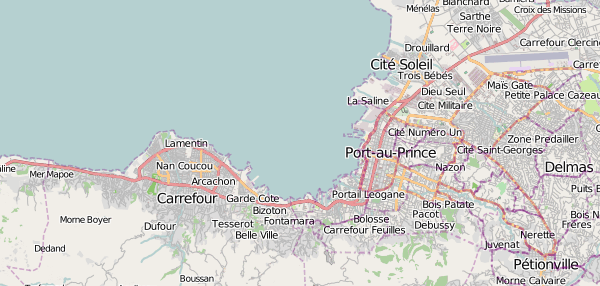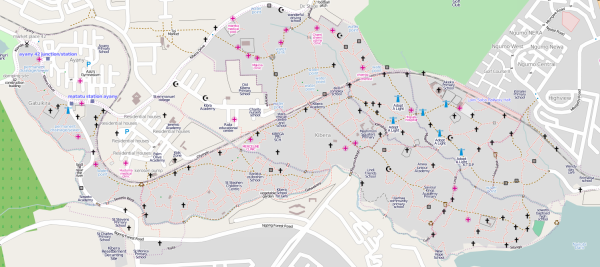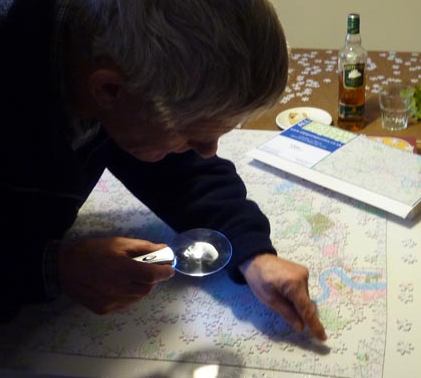In last week’s blog post I casually mentioned the Haiti earthquake, and how we had a little project going on, to improve the map of the area on OpenStreetMap. Since then the scale of the disaster has become clearer to me. 200,000 feared dead, and the story has been top of the news headlines all week. In keeping with this, the response by the OpenStreetMap community has been impressive, with massive mapping progress in a very short space of time. What started out for me as a little casual doodling in of streets in Yahoo! imagery, has rapidly turned into a collaboration of hundreds of mappers using post-quake aerial imagery.

For me the exciting thing about this past week, has been an increase in recognition of OpenStreetMap as a valuable source of map data. In a scramble to help by providing GIS expertise, many organisations have come to OpenStreetMap as the best source of data. More exciting than that (so amazing!), is to get a message of thanks from some people running search and rescue teams, who have loaded our data onto Garmin units to use on the ground. See Uses of OpenStreetMap data by crisis responders for more examples.
The important point to stress here is that OpenStreetMap is offering map resources covering the Haiti Earthquake in a variety of formats. You can browse the map as conventional fluid web interface, but our open data allows us to do so much more than that.
- We can offer downloads of raw OSM XML data, ESRI shapefiles, Garmin img. These are listed at the top of that page. Well done to GeoFabrik for responding quickly with their specialised Haiti downloads service
- Mobile devices across many platforms can make use of our data or map images. See this section and the main ‘Software for mobile devices’ list. People heading to Haiti for rescue and recovery missions, should juice up their devices with this good stuff!
- We can render the map in different ways. User:Ldp set up haiti.openstreetmap.nl as a custom Mapnik rendering showing building damage and refugee camps. These are special tags invented for the purposes of recording this information using OpenStreetMap’s open tagging approach
- We can provide rendered maps tiles for use in online apps. Anyone setting up a website e.g. to help with the earthquake response, can display OpenStreetMap maps in much the same way as embedding a google map. (It’s a little known fact that you can even use Google Maps API to display OpenStreetMap tiles. See Google Maps Example)
- We can offer maps files for printing. The list of printable files includes vector formats (SVG and PDF) and high resolution raster images offered by me! This was my main technical contribution over the past week (assuming you don’t count wiki link fiddling as technical!) I set up some hi-res map images of Port-Au-Prince and Carrefour and a script to rebuild the image with updates every hour. At the time I hadn’t noticed GeoFabrik had done the same thing, but they’re covering different areas and larger images, so it’s all a good variety of offerings.
- We can set up other types of customised geo services for Haiti using OpenStreetMap’s raw data. Check out Open Route Service Haiti and Nominatim Search for Haiti
A lot of these things were possible using the collective expertise of the OpenStreetMap community who, uniquely, have become fully accustomed and experienced with having access to raw map data.
I mentioned 48 hours as an approximate measure of how long things took, but as ever with OpenStreetMap, things are never really complete. The mapping efforts in Haiti are very much ongoing, and you can help! Check out the Haiti project page for details. We’re mainly looking at mapping more outlying country roads, anything new you can find to sketch within the various imagery sources, but also making use of some other sources e.g. street naming from U.S. military maps. If you’re new to OpenStreetMap mapping you’re very welcome to get stuck in, but be prepared to climb a bit of a learning curve with the editing software (set aside an hour)
But we need to get the message out about the map resources I’ve listed above. I think that’s more important than encouraging people to join in with mapping at this stage The Fairfax County Urban Search & Rescue Team in their message said “Please be assured that we are using your data – I just wish we knew about this earlier”.
UPDATE: I’ve written about OpenStreetMap and Google MapMaker in Haiti in relation to the wasted duplication of effort split between the two communities (and relating some other blog posts on the topic here and here and here)

 As a follow up on the
As a follow up on the 























